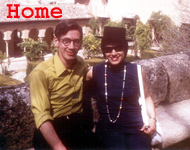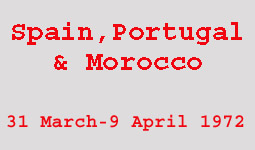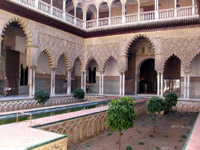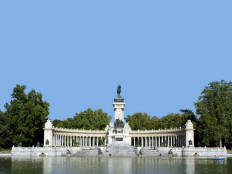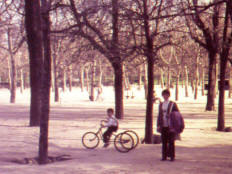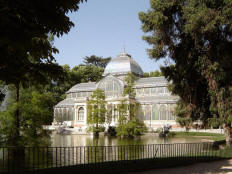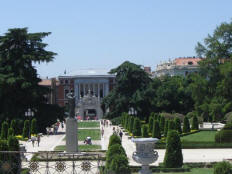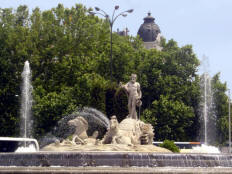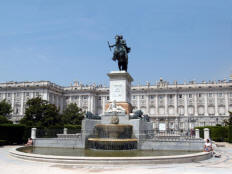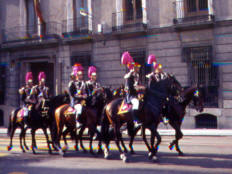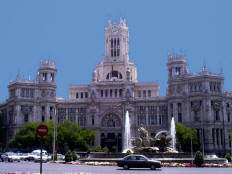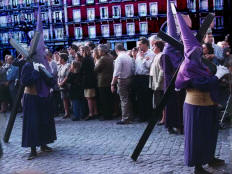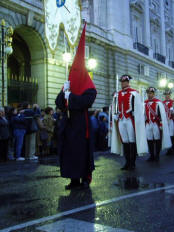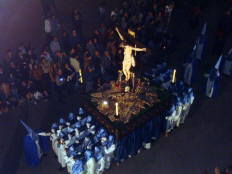Page 1 2 3 4 5 6 7 8 9 10 11 12 13 14 [Note: This trip journal was prepared in 2007 from notes made during the 1972 trip but only recently discovered. I have tried to keep it consistent with the original notes and to avoid flavoring it with later-acquired knowledge, including knowledge of more recent developments.] Introduction. We were approaching the third summer of our tour with the Army in Heidelburg, Germany. Normally we would have been going back to the States in August, but Darrell had been offered a choice assignment (Staff Judge Advocate of V Corps) if he agreed to stay in Germany another year and move to Frankfurt. With the move to a new city, new quarters, and the start of a new job, it was unlikely that we would get much chance to travel over the summer when our four boys (ages 17 to 12+) were out of school. So we decided to drive to Spain with them over the Easter break when they had ten consecutive days off. However, as planning progressed, it became clear that the boys preferred not to go. We decided not to force the issue. Instead, we thought we would take advantage of the opportunity for just the two of us to take a group tour to Spain. (Our only previous group tour was from Verona, Italy, to Vienna, Austria, in 1960.) The cost wouldn’t be much more than it would have been for the six of us to visit Spain by car, and the two of us would be able not only to get deeper into Spain, but also to see a little of Portugal and Morocco as well. Of course, we couldn't have done it if we didn't have grandmotherly Frau Kraemer to come in to cook and clean for the boys. We found a DER Travel Service tour conducted only twice a year (Easter and Christmas) by a German university professor (Rolf Lehmann) who had studied in Spain. The tour, in English, was designed specifically for teachers in the American military dependents’ school system and, except for us, all the other participants were teachers. The cost of the tour was $359 each with “Everything included; no hidden extras.” Of course, it did not include beverages, and there are always some things you’ll want to do on your own, so the final cost for the two of us was about $900 ($4,600 in 2010). Friday, 31 March. Good Friday, a German holiday! We left our quarters in Heidelberg before 08:00 and drove to the Frankfurt Airport, then undergoing its painful transition from a small and backward facility to world-class status. The new terminal had opened just two weeks earlier, but the place was still a mess. Fortunately, we were able to park there in spite of the large area torn up by construction. We were in plenty of time to meet Mr. Lehmann and our tour group at 09:15. There were about 20 of us in the group. Our Lufthansa flight took off at 10:00 and landed in Madrid at 12:15 (gaining an hour because of the time change). Unfortunately, two 747s arrived in Madrid about the same time we did, and that resulted in a long delay in retrieving our luggage. Eventually a bus took us to the Carlton Hotel. Even though we had eaten on the plane, we were served a huge four-course lunch. Because it was a holiday, the hotel was the only place we could change money, and we did so ($1.00 = 56 pesetas). We were supposed to be on our own for the rest of the day, but Mr. Lehmann offered to guide the group on a walk through central Madrid at 15:00. He led us by the train station to Buen Retiro Park, a beautiful 350 acre park near the center of Madrid.
Then we walked by the Prado Museum, the Neptune Fountain, the Cortes
(Parliament), Puerta del Sol, Plaza Major, Plaza de Oriente, and the Royal
Palace (Palazzo Real). By luck, a group of cavalry in fancy uniforms rode by us
not far from the Palace. When the group broke up about 16:00, the two of us took
a taxi back to the hotel.
We rested while we waited for dinner. The Spanish are notorious for how late they dine, usually not before 22:00. We planned to go out to see the Good Friday procession that we were told was to begin at 23:00, and we wanted to eat before we went. The hotel restaurant finally opened at 21:30. We rushed through dinner, needlessly as it turned out.
A little after 23:00 we took a taxi to the Cibeles Fountain (1782), in front of
the classic Communications Palace (Post Office). Then we walked along the
Procession route until we found a good place to watch. This was some distance from the starting
place, and the procession moved much more slowly than we had expected. We waited almost 80
minutes before the first marchers reached us. By that time, of course, it was completely dark, but
there were floodlights all along the route.
Although there were a few statues carried by the marchers, most of the Good Friday Procession consisted of penitents
on foot, most in
hooded robes (very similar to those worn by the Ku Klux Klan, but of various
colors). About half the penitents carried crosses, some small, some very large.
Others were bare-backed and flagellated themselves with whips of knotted cords.
Although very dramatic and unusual, it also quickly became very repetitious. We watched for less than an hour before we took a taxi back to the hotel . Even so, by the time we got to bed it was nearly 02:00.
Page 1 2 3 4 5 6 7 8 9 10 11 12 13 14
Copyright © 2000-2023 DarrellPeck.com All rights
reserved. | |||||
